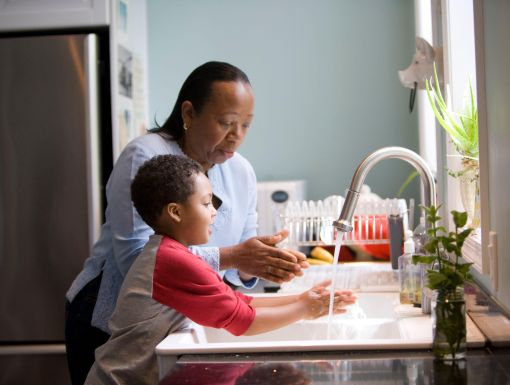
Coronavirus: Caring for Yourself or a Loved One
When you or a family member develop a cough or a slight fever, your mind might immediately jump to “Do I/they have coronavirus?” Remember, we are still in flu and cold season and allergy season is starting up. The presenting symptoms may be related to something different than COVID-19.
If you or a family member do start to experience symptoms that cause concern, before you visit a hospital or urgent care facility, you should reach out to your physician or nurse through Ochsner Anywhere Care; the MyOchsner patient portal, which allows you to connect with your primary care physician or pediatrician; or call the Ochsner COVID-19 Info Line, our free nurse care line (1-844-888-2772). Your physician will be able to help navigate your symptoms to decide what is the best treatment option.
If you or a family member are suspected to have COVID-19 or test positive, keep in mind that not everyone will be hospitalized. Treatment will vary depending on the severity of the symptoms and the health of the patient. Your doctor can help determine if present symptoms can be treated at home or if you need to visit an office or hospital in-person.
If your doctor thinks you or your family member’s symptoms can be managed at home, here are some steps the CDC recommends you take:
If you are caring for yourself
- If you have COVID-19, you should go into isolation. COVID-19 is spread through person-to-person infection. If you live at home with other people, stay in a specific room and away from other people in your home. Also, you should use a separate bathroom, if available. Avoid going into work or school to avoid spreading the virus more.
- Avoid sharing personal items with other people in your household, such as dishes, cups, dinnerware, towels and bedding.
- Get rest and stay hydrated.
- Cover your coughs and sneezes with a tissue and immediately throw the tissue away.
- Wash your hands frequently with soap and water for at least 20 seconds or clean your hands with an alcohol-based hand sanitizer that contains at least 60% alcohol.
- If you need to be around other people in or outside of the home, wear a face mask.
- If you have a fever, you can take fever-reducing medications, such as Tylenol or Ibuprofen. Continue to discussion with your provider what medications you are taking.
If you are caring for a family member, such a child or elderly parent
- If someone in your family has COVID-19, household members should stay in separate rooms if possible. Household members should also use separate bathrooms if possible.
- The patient should wear a facemask when they are around other people. If the patient is unable to wear a mask, such as a child, the family member treating them should wear a mask when they are in the same room.
- Wear a disposable mask and gloves if you are handling the patient’s blood, stool or bodily fluids, such as saliva, mucus, vomit or urine.
- Wash all laundry thoroughly using the warmest appropriate water according to the manufacturer – wear disposable gloves while handling soiled items.
- Throw away any disposable gloves or masks in a lined container.
- According to the CDC, “When removing personal protective equipment, first remove and dispose of gloves. Then, immediately clean your hands with soap and water or alcohol-based hand sanitizer. Next, remove and dispose of facemask, and immediately clean your hands again with soap and water or alcohol-based hand sanitizer.”
- Clean your hands with soap and water for at least 20 seconds frequently – especially after handling contaminated items or helping the patient. An alcohol-based hand sanitizer that contains 60 to 95% alcohol can also be used. Cover all surfaces of your hands and rubbing them together until they feel dry. Soap and water should be used preferentially if hands are visibly dirty.
- Avoid touching your mouth, nose and eyes.
- Avoid sharing household items with the patient, such as dinnerware, towels, bedding, etc.
- Frequently disinfect high-touch areas such as countertops, doorknobs, toys electronics, etc.
- Prohibit any non-essential people from coming over to your house.
If you find you or your loved one’s symptoms are worsening, call your healthcare provider immediately. Let them know you or your family member have or may have COVID-19. For medical emergencies, call 911 and notify the dispatch personal that you or your family member have or may have COVID-19.
In early December 2020, the Centers for Disease Control and Prevention (CDC) updated their recommendations regarding COVID-19 exposure quarantine. While this doesn't apply to healthcare workers and other essential personnel, the guidance now states that quarantine can end after 10 days (rather than 14) with no testing and no symptoms. Quarantine can end after seven days with a negative test and no symptoms.
The information in this blog post is accurate at the time of publication. However, as the situation surrounding COVID-19 continues to change, it's possible that information has changed since being published. While Ochsner Health is trying to keep our blog posts as up-to-date as possible, we also encourage readers to stay informed on news and recommendations by using the CDC website.



